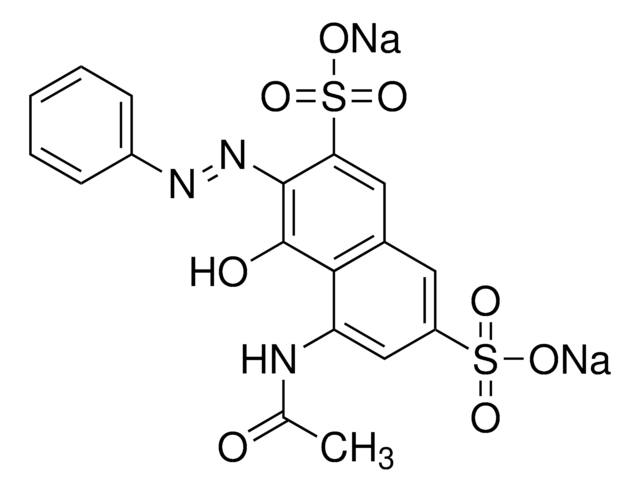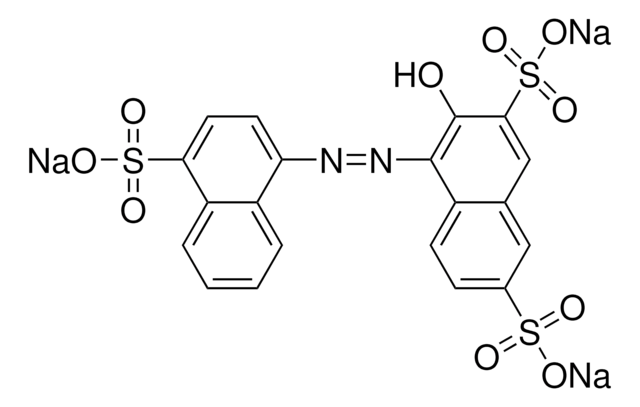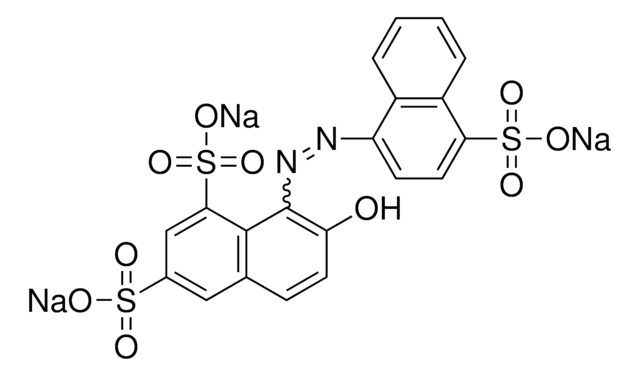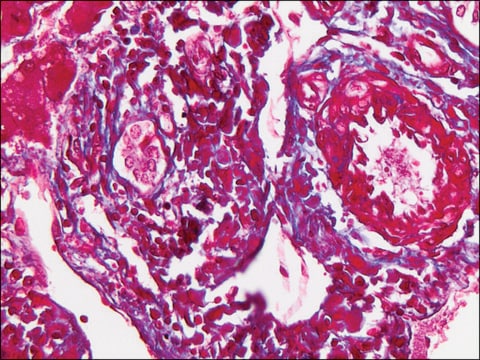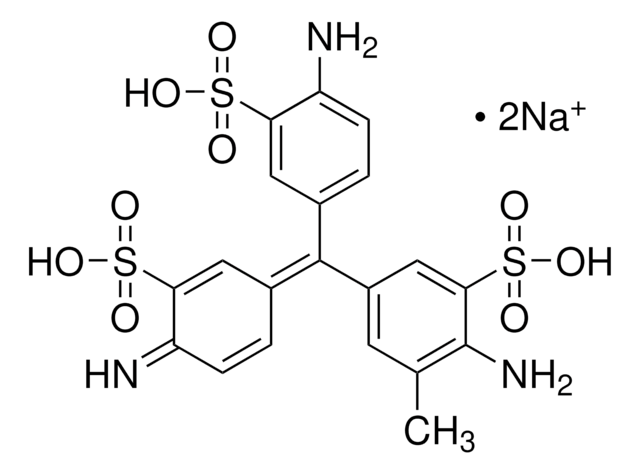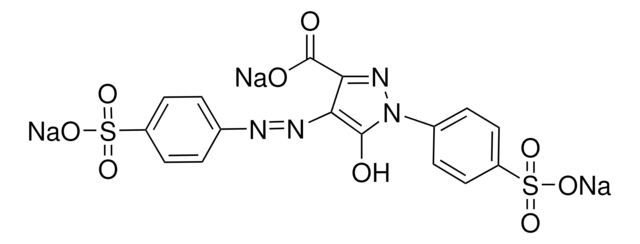11640
Azophloxine
for microscopy (Hist.)
Synonim(y):
Acid Red 1, Food Red 10
About This Item
Polecane produkty
klasa czystości
for microscopy (Hist.)
Postać
powder
rozpuszczalność
methanol: water (1:1): 0.5 g/10 mL, red
εmax
≥300 at 527-537 nm in water
Zastosowanie
diagnostic assay manufacturing
hematology
histology
temp. przechowywania
room temp
ciąg SMILES
[Na+].[Na+].CC(=O)Nc1cc(cc2cc(c(\N=N\c3ccccc3)c(O)c12)S([O-])(=O)=O)S([O-])(=O)=O
InChI
1S/C18H15N3O8S2.2Na/c1-10(22)19-14-9-13(30(24,25)26)7-11-8-15(31(27,28)29)17(18(23)16(11)14)21-20-12-5-3-2-4-6-12;;/h2-9,23H,1H3,(H,19,22)(H,24,25,26)(H,27,28,29);;/q;2*+1/p-2/b21-20+;;
Klucz InChI
WXLFIFHRGFOVCD-SERMZQFOSA-L
Szukasz podobnych produktów? Odwiedź Przewodnik dotyczący porównywania produktów
Opis ogólny
Zastosowanie
Kod klasy składowania
11 - Combustible Solids
Klasa zagrożenia wodnego (WGK)
WGK 3
Temperatura zapłonu (°F)
Not applicable
Temperatura zapłonu (°C)
Not applicable
Środki ochrony indywidualnej
Eyeshields, Gloves, type N95 (US)
Certyfikaty analizy (CoA)
Poszukaj Certyfikaty analizy (CoA), wpisując numer partii/serii produktów. Numery serii i partii można znaleźć na etykiecie produktu po słowach „seria” lub „partia”.
Masz już ten produkt?
Dokumenty związane z niedawno zakupionymi produktami zostały zamieszczone w Bibliotece dokumentów.
Klienci oglądali również te produkty
dye using nanosecond Z- scan technique
Acid Red 1 (Azophloxine)
Nasz zespół naukowców ma doświadczenie we wszystkich obszarach badań, w tym w naukach przyrodniczych, materiałoznawstwie, syntezie chemicznej, chromatografii, analityce i wielu innych dziedzinach.
Skontaktuj się z zespołem ds. pomocy technicznej